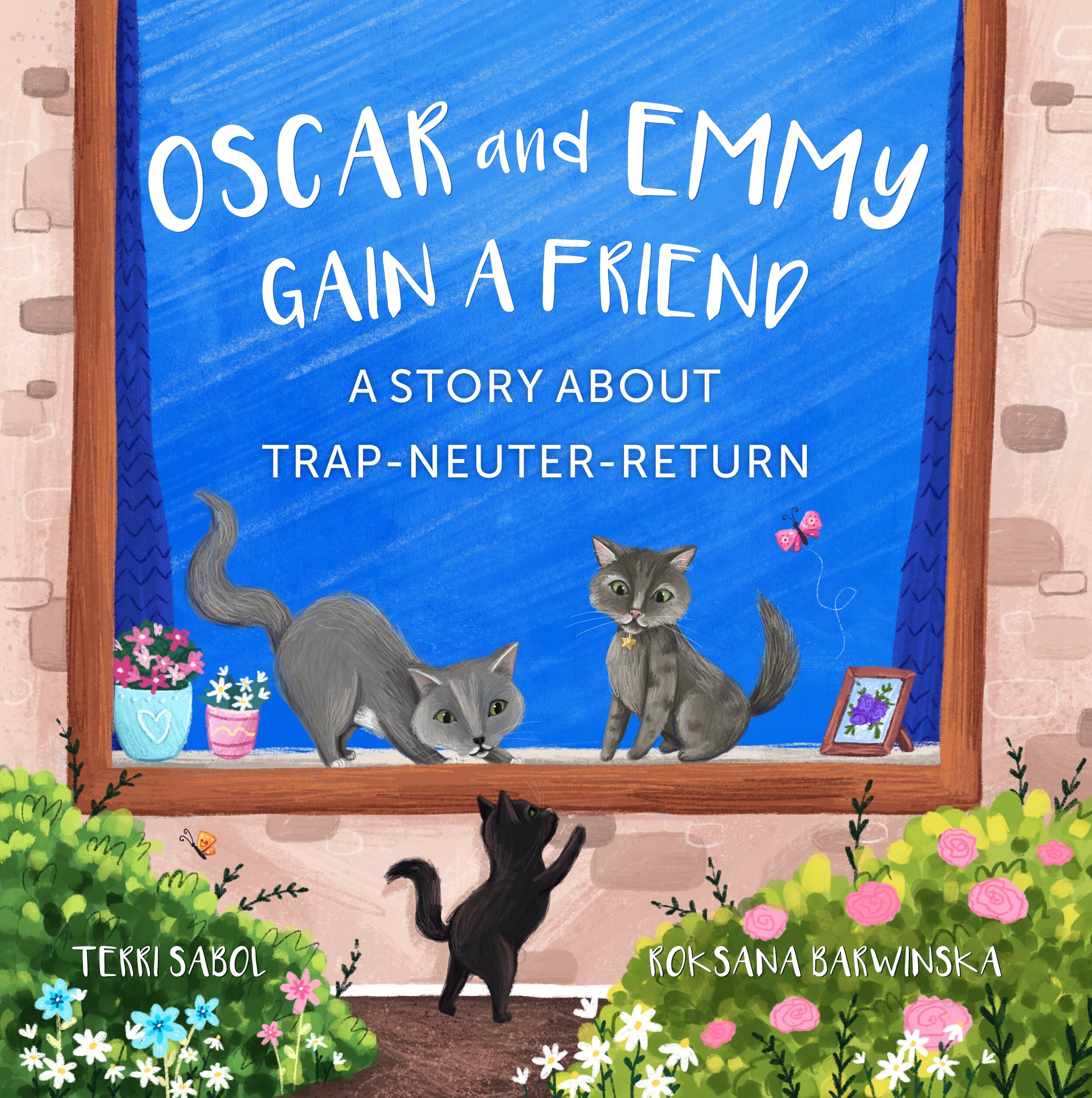Trap-Neuter-Return, TNR Benefits for Stray and Feral Cats in Your Community
Hey Y’all,
You are probably reading this if you have read my book, Oscar and Emmy Gain a Friend: A Story About Trap-Neuter-Return. Or maybe you came across a fun infographic I shared on social media and you wanted to learn more information about TNR. Thank you for being here to learn more about our cat community.
Terri
“The greatness of a nation and its moral progress can be judged by the way its animals are treated.”
By Mahatma Gandhi
(An Inspurrational Quote from thecatsite.org)
What is TNR?
TNR stands for Trap-Neuter-Return. Mom explains TNR to her kids in my book, Oscar and Emmy Gain a Friend: A Story About Trap-Neuter-Return.
· TRAP refers to the process of catching outdoor stray and feral cats (in a way that won’t harm them).
· NEUTER refers to having the cats spayed (if they are female) or neutered (if they are male).
· RETURN refers to returning them to the place where they were captured.
It used to be called Trap-Neuter-Release. The word Return better implies that the cats should return to the location where they were trapped. Cats who can’t be returned to the same area (if that area is unsafe for them), will usually become barncats on a farm, where they serve the purpose of keeping rodents away.
Sometimes stray and feral cats are referred to as community cats. They are outdoor cats who aren’t socialized enough to be adopted.
What is the difference between stray cats and feral cats?
They are both outdoor cats. Feral cats have had little or no contact with people. They are very skittish because they are scared of humans since they don’t trust them.
Stray cats could have been someone’s pet, but who got lost or abandoned. Or maybe the kitten of a former pet. They either have been socialized, or they can easily become socialized.
Why doesn’t animal control trapping and removing cats work?
In the past, the method of capturing the stray and feral cats to euthanize (or kill) them has proven to be ineffective. It doesn’t work because cats are territorial. If you remove the cats that were ‘controlling’ that area, then new cats will just come in and take over. This is referred to as a Vacuum Effect.
This method has shown us that killing the stray and feral cats is cruel, and just doesn’t work to control the outdoor cat population. So then their death becomes pointless. If all of the cats in the colony are not trapped, then the remaining cats will probably have larger litters. And those kittens have a better chance of survival since there’s less competition for food. Then their population will continue to increase until it gets back to where it was.
What can your community do to help control the pet population?
Check to see if your community already has a TNR program in place. You can check for a social media page. If there is, then join that. If not, talk to other neighbors who share your compassion for the outdoor cat community and start your own TNR program. One neighborhood will probably have several different colonies, based on the size of your area.
TNR volunteers needed
There are many levels of volunteers.
There should be a leader of the community program, the main person people can contact for information or help.
Donations are always welcome to pay for food, surgeries, and traps.
Drivers are needed to transport trapped cats to and from the vet for their surgery.
Caretakers not only give food and water (and shelter during extreme weather situations), they keep tabs on how many cats are in the colony and their patterns, and looks for changes in health. They can also help determine when the outdoor cats become more socialized and adoptable.
If there isn’t a local vet who offers discounted spay and neuter, you can call around. If there’s nothing nearby, see if you can schedule an appointment with your local vet.
What is ear tipping and does it hurt?
A tipped ear is when one ear is made shorter than the other. The vet will remove about ¼ of an inch off of one ear. Though which ear is tipped varies by where in the world you are, ear tipping is recognized all around the work as announcing that cat has been sterilized. It usually heals very quickly. Ear tipping is important because if in the future, someone sees this stray or feral cat and their tipped ear, then they will know the cat has already been taken care of and given the surgery.
What if my neighbors don’t like stray cats?
Some neighbors don’t like having outdoor cats around. The cats might dig up their garden, or use their yard to go to the bathroom. They might think the solution is to remove the cats.
When you have the facts, you can help teach them why trapping, neutering, and returning the cats is actually the best long-term solution. Fixed cats (cats who have been spayed and neutered) are much less likely to mark their territory (or spray small amounts of urine in various areas).
Spayed and neutered cats are healthier since they won’t have any more litters of kittens. They also won’t fight over potential mates, therefore causing less noise.
TNR improves the quality of the cat colony by preventing more kittens being born, which reduces the number of cats over a longer period. Spay and neuter surgery is also cheaper than animal control removing the cats, providing them shelter, and eventually euthanizing the unadoptable cats.
Anything else I can do?
Besides indoor cats having a longer lifespan, they have better health (less predators and poisonous things) and less risk of getting lost or stolen.
You can keep your indoor kitty exercised through playing with them and having entertaining toys. If you keep your cat indoors starting as a young kitten, it’s much easier to keep them happy indoors as they grow up. You can provide some outdoor playtime, either with a harness (mine won’t go for this), building a catio, having a screened in porch, or even just opening a window so they can feel the air, hear the birds, and smell the outdoors.
My personal experience with TNR
My stray cat story is very much like the one in my book, Oscar and Emmy Gain a Friend: A Story About Trap-Neuter-Return. All of my Oscar and Emmy books are inspired by real life. Our stray cat family started coming to our door in April of 2019. Just like in the book, my cats noticed her first (she was alone), then we fed her and she gobbled up that food, so we fed her some more and gave her water to drink. Every time we opened up the door, she would run and hide in the bushes.
Then next time, she brought one cat, then two and so on until she showed up with 5 kittens. Now my cats are on this organic, grain-free, expensive diet. I definitely couldn’t keep giving out their food to these cats I didn’t know. So we quickly bought some off-brand cat food, which they loved. But we also fed them Oscar and Emmy’s treats, which O&E did NOT approve of.
We cared for this cat family for a couple of months. By this time, the 5 kittens dwindled down to 3 kittens. After seeing the social media group about TNR and learning more about that, I decided it was time our stray cat family got spayed and neutered. I didn’t take them to the ‘free’ surgery vet since that was an hour away. I called my vet and was told they offer discounted surgeries to stray and feral cats.
They were all spayed or neutered, and they received their Rabies vaccine. And Oscar and Emmy were very fascinated with the stray cat family. You can see Oscar in the window, watching like they did every night.








